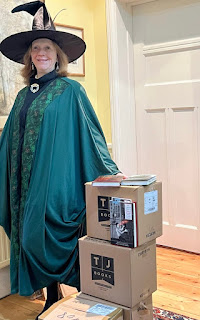Hell on Earth - Passchendaele Centenary 1917 - 2017. By Griselda Heppel
What’s it like to be at the heart of Hell?
 |
| Dante Alighieri |
Well, if you thought that, you’d be wrong, according to Dante Alighieri, whose first part of The Divine Comedy, The Inferno, is an imaginary descent through all the nine circles of Hell. Not about the wicked being punished - that’s non-negotiable - nor about the parts of Hell that do rage with fire (hence the modern use of Inferno to describe such terrible disasters as Grenfell Tower); but about the centre of Hell itself, the lowest circle in which the wickedest souls of all are punished. They are the traitors: betrayers of family, country, guests, benefactors and finally, God himself. There is no heat of passion in their crimes, only cold, ruthless calculation; their punishment is to be frozen forever in a vast, desolate, treeless plain, an outside manifestation of the ice in their own hearts.
The depiction of Dante and Virgil stumbling among these immobile figures, trying not to kick at the heads just poking above ground, in the teeth of a bitter wind, is one of the most chilling episodes of the whole Inferno. Not only that: the Hell created here has an immediacy of detail that brings it horribly close to human experience. Take away the moral judgement aspect, pockmark the plain with craters and jab it with barbed wire fences, scatter millions of cartridge cases and pieces of shrapnel, add bursts of machine gun and shellfire, relieve the darkness sporadically with flares and waterlog the ground with steady, unceasing rain - and you have Siegfried Sassoon’s famous line: I died in Hell - (They called it Passchendaele).
This is why, when updating Dante’s Hell for my children’s version of his story, Ante’s Inferno, I could think of no better way to try to match the horror of his ninth circle than to follow Sassoon’s lead.
An accident at school sends 12 year-old Ante (Antonia) on a journey through the Underworld, accompanied by her worst enemy, Florence, and Gil, a boy who died 100 years before the story begins, on the eve of the First World War. At first, the three of them have to deal merely (!) with creatures and monsters from classical legend, such as Cerberus, Charon, harpies and the minotaur.
It’s lower down that man-made instruments of destruction come into their own, culminating in the bottom of Hell consisting of a recreation of the battle of Passchendaele, arguably the most terrible of the whole war. From its beginning on 31 July until the capture of Passchendaele ridge by the Canadian Corps on 10 November, 1917, the casualties on both sides came to well over half a million: shot, blown up, gassed and even drowned, as vast areas of the ground had been churned into liquid mud many feet deep. Siegfried Sassoon wasn’t wrong. Even in light of so many other appalling WW1 battles, Passchendaele stands out.
 |
| Charon ferries Dante and Vergil across the Styx. (Gustav Dore) |
This year marks 100 years since the battle took place, an anniversary I’ll be bringing out on a number of school visits I have booked around Remembrance Day in November (I have room for more, any Year 5 - 8 teachers out there!). In honour of the Centenary, Ante’s Inferno has undergone a special reprint, the jacket updated by the addition of this haunting photograph from the Imperial War Museum.
I think Dante would have understood.
Always assuming he’d forgive my cheek in reimagining his masterpiece in the first place…
Find out more about Griselda Heppel here:








Comments
I agree, Dennis, the name Passchendaele with its ring of Christ's Passion (as in St Matthew Passion) is almost a tragic example of nominative determinism (if that's the right term).